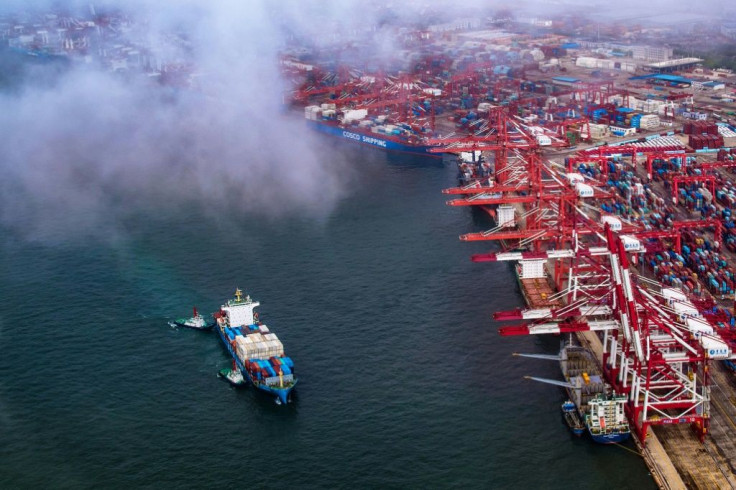Firms In China Remain Wary Despite US Trade Deal

Washington and Beijing may be ready to sign a preliminary trade agreement, but companies in China are not taking any chances, forging ahead with contingency plans in case the tariff war resumes.
As Chinese Vice Premier Liu He travels to Washington from Monday to Wednesday to seal the deal, manufacturers and suppliers told AFP that they fear the agreement could be upended even after it is signed.
Rather than focusing on the agreement, they are planning for the worst -- seeking new markets abroad, increasing their presence at home or moving production overseas.
The "Phase One" deal signalled a de-escalation in a trade conflict pitting the world's two most powerful economies against each other for nearly two years.
But even as the US held off last month from a further escalation in tariffs, firms continue bearing the brunt of existing levies as well as suffering a lower volume of orders amid simmering trade tensions.
Washington maintains 25 percent tariffs on about $250 billion worth of Chinese imports.
"Even if they signed the Phase One deal, we don't know if things will change at a later stage," said Alfred Wong, CEO of D&S Products Manufactory, which is headquartered in Hong Kong and has a factory in the southern trade hub of Shenzhen.
Wong's company, which makes child safety products and greeting cards, has moved almost a third of its production to Sri Lanka since last September, even though it has not been hit hard by existing tariffs.
Wong said that clients were unlikely to give it new deals if it did not adopt a "China plus one" strategy of diversifying operations outside the country.
He added that orders for products had fallen last year, much of it due to uncertainty over potential escalations in tariffs.
"Even if President Donald Trump were not in office, the US could still take action against China," said Wong. "Things are unlikely to return to the way they were before the trade war."
Jason Lee, CEO of metal parts manufacturer Shanghai EverSkill M&E, said the US market made up about 60 percent of his company's sales before the trade war, but this has dropped to around 40 percent.
He is now looking for more clients outside the US to make up for some of the shortfall.
"In the long run, as a Chinese supplier, we can only improve on our products and ensure they are better compared with those from elsewhere. That is the most fundamental solution," Lee said.
Instead of looking abroad, Silver Star, a robot vacuum-cleaner maker headquartered in Shenzhen, is now seeking to increase its market share within China, particularly via e-commerce.
"Macroeconomic policies are not within the control of small business owners like us," said company chief executive Ludwig Ye.
Some companies are also doing less research and development for new products.
Kim Ng, managing director of kitchen gadgets producer Ko Fung, said this has had a knock-on effect on business for the rest of the year as the production of new goods typically comes after research and development.
Ng added that the potential cut in tariffs in the Phase One deal is only from 15 percent to 7.5 percent on around $120 billion of Chinese imports.
"President Trump is attacking China to boost his popularity, and it is (a US presidential) election year. I expect the further stages of negotiations will be more difficult," he said.
Iris Pang, Greater China economist at ING, said the rollback on tariffs is likely to benefit only "a very small group of exporters".
UOB bank's head of research Suan Teck Kin said that while the deal suggests that trade tensions have stopped escalating, it does not address other sources of strain such as China's subsidies to state-owned enterprises.
Analysts also remain divided on whether China is likely to raise its purchase of US agricultural goods to at least $40 billion annually over two years, a figure invoked by US officials.
China has not confirmed the numbers, but Suan said it was not impossible to achieve.
If US farm-product purchases hit around $40 billion by 2021, it would likely represent about 23 percent of China's agricultural imports. At its 2015 peak, US farm products made up nearly 25 percent of China's imports, he said.
Tensions also remain on other fronts, especially in technology, with the US having imposed sanctions on Chinese telecom champion Huawei.
"There seems to be an escalation of the tech war between China and the US, and between China and the rest of the world," said Pang.
"It seems that it's not only a trade war now, it's an overall resistance towards China's development of advanced technologies."
© Copyright AFP 2024. All rights reserved.




















